
I performed my graduate research work under the advisement of Prof. Kim-Vy
Tran at Texas A&M University. My research work focused on the topic of galaxy
formation. A summary of my publications can be found by
searching the ADS for Jimmy.
A recent version of my Curriculum Vitae can be found at this link.
Below are the major topics and results of my work. More details for the various projects
as well as more figures can by found in my research group wiki page.
Brightest Cluster Galaxy Rotation

My initial research project focused on the formation history and
rotation properties of Brightest Cluster Galaxies (BCGs). We
discovered a population of fast rotating Brightest Cluster Galaxies
using the VIMOS IFU. This result was rather unexpected considering the
fact that brightest cluster galaxies undergo a large number of mergers
and we had expected the net effect of billions of years
of mergers to remove the angular momentum for these local universe objects.
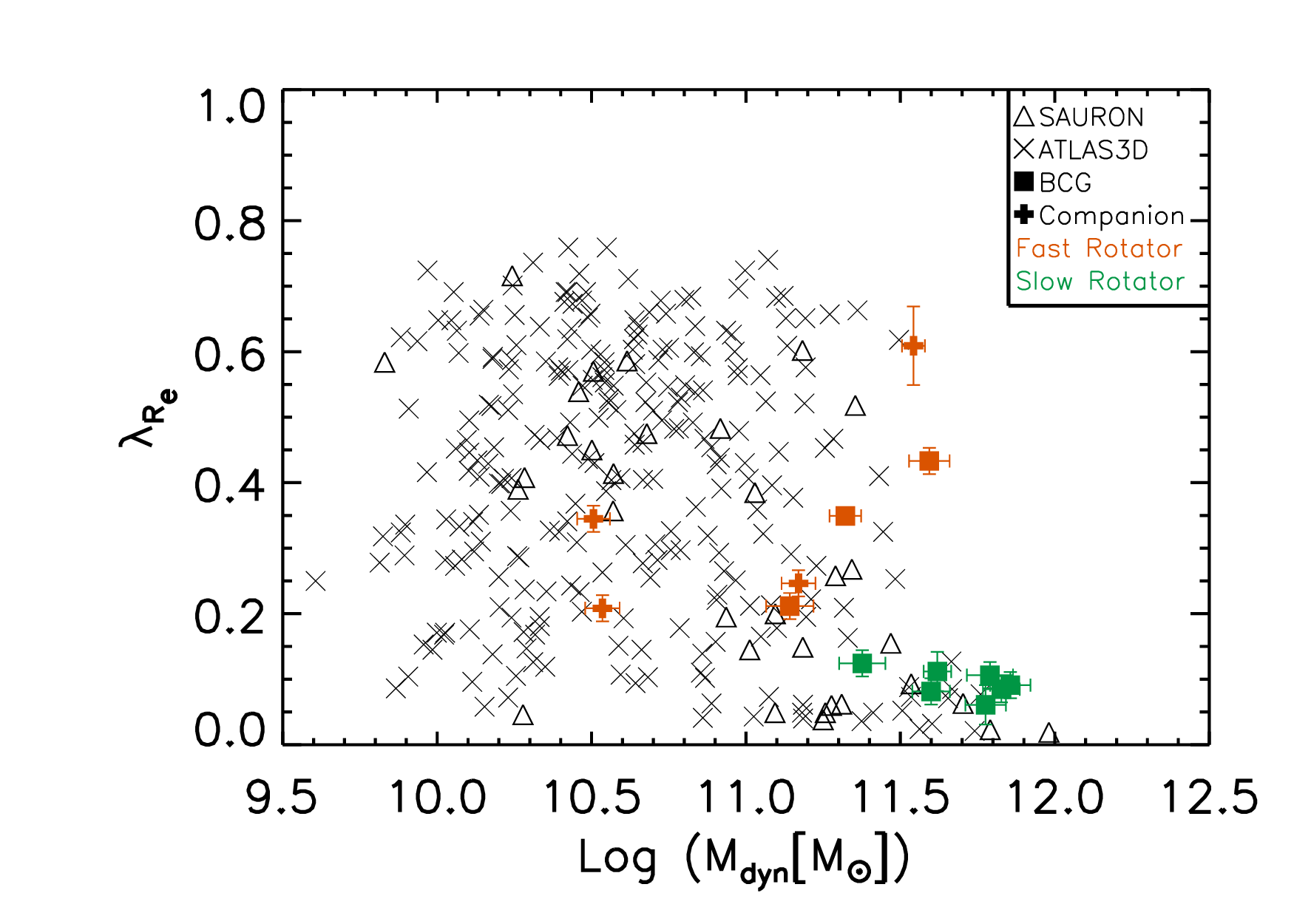
We examined the angular momentum as a function of mass to see if the larger
galaxies were preferentially slowly rotating, as would be expected by our
initial hypothesis that mergers tend to remove angular momentum. We found instead
that the angular momentum appeared to be independent of the mass of galaxies whether
they be brightest cluster galaxies or typical early-type galaxies.
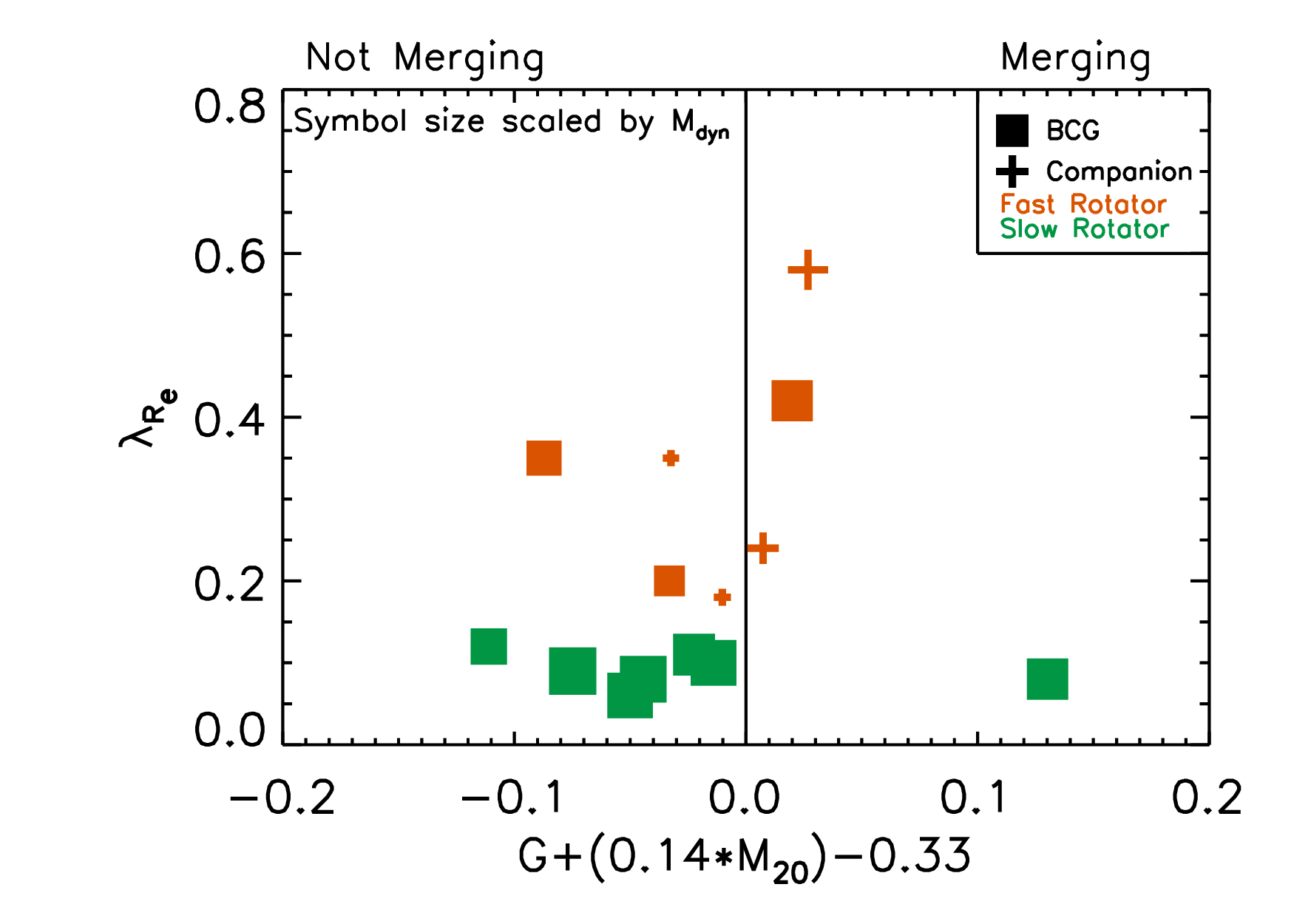
Finally we used to the Gini coefficient and the 2nd moment of brightness in order to
sort our galaxies between merging and non-merging systems. We found that there was
again no correlation between very recent merger status and angular momentum. This final result
leads us to conclude that the angular momentum of brightest cluster galaxies is not
special when compared to other early-type galaxies. Also we conclude that the
angular momentum of a brightest cluster galaxy is dependent upon more than just the
number of mergers or the recent merger history.
Dwarf Galaxy Fundamental Metallicity Relation
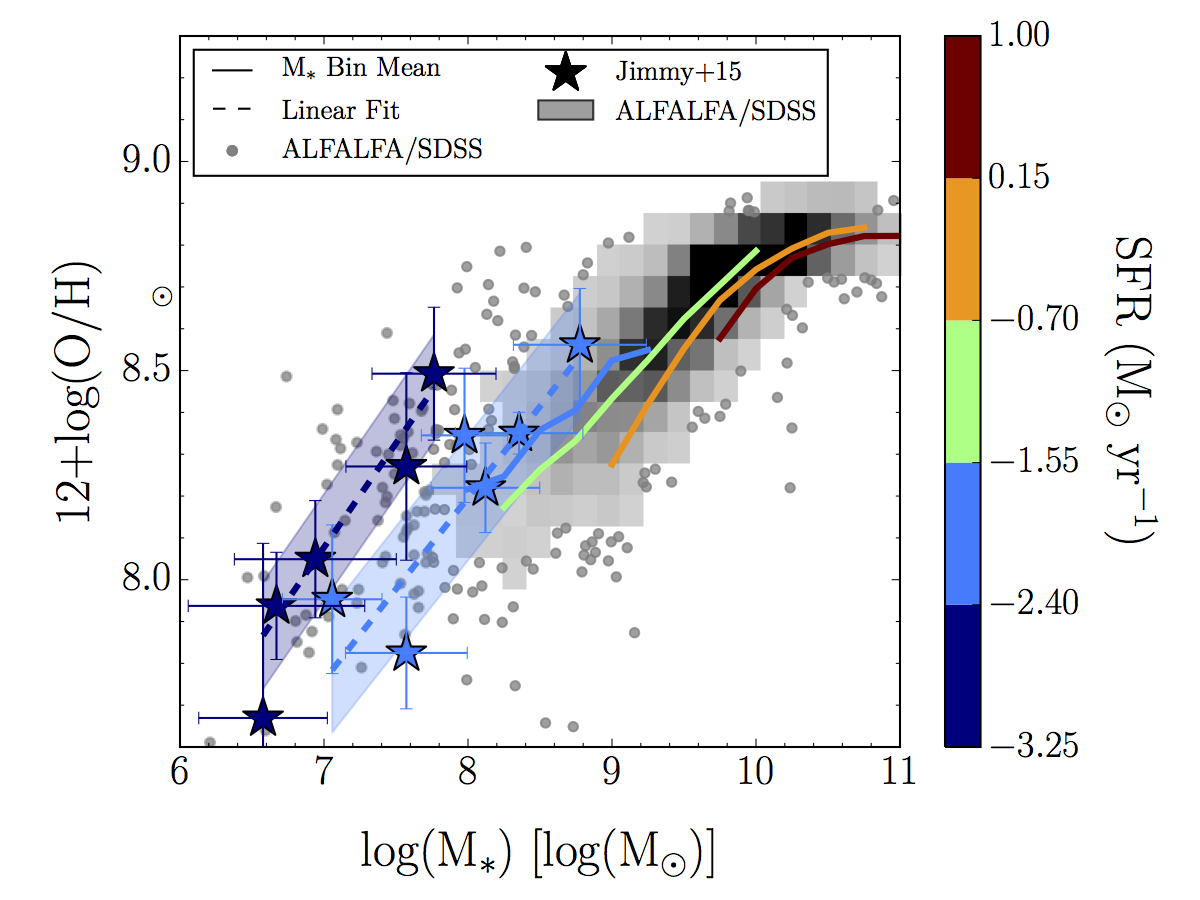
On the opposite end of the galaxy mass spectrum, I have also studied a population of
dwarf galaxies, also using the VIMOS IFU spectrograph. Here we were examining the
fundamental metallicity relationships, which is an extension of the mass-metallicity
relationship which integrates information about the star formation rate of galaxies.
We pushed the known fundamental metallicity relation down to lower stellar masses than
had been observed before and found that it still holds, meaning it is valid across a very
large mass range. This is surprising that whatever physical mechanism is responsible would
work from galaxies so large and so small.
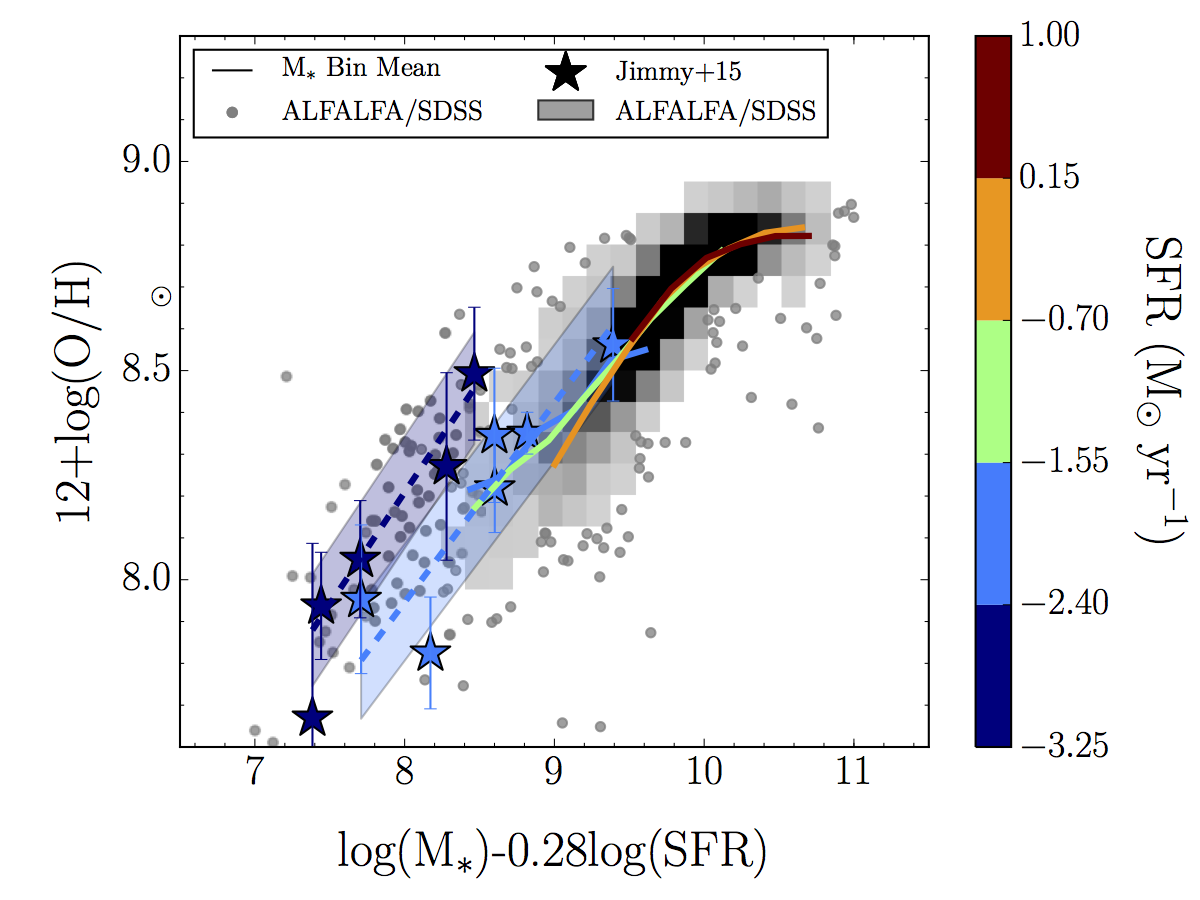
In creating our fundamental metallicity relations, we found that a value of alpha = 0.28
produced the lowest scatter in the fundamental metallicity relation when observed as a function
of star formation rate. We find that the lowest SFR bin is offset, and inconsistent with the
fundamental metallicity relation, suggesting either a physical breakdown in the relationship,
or possible limitations in our ability to accurately measure low star formation rates.
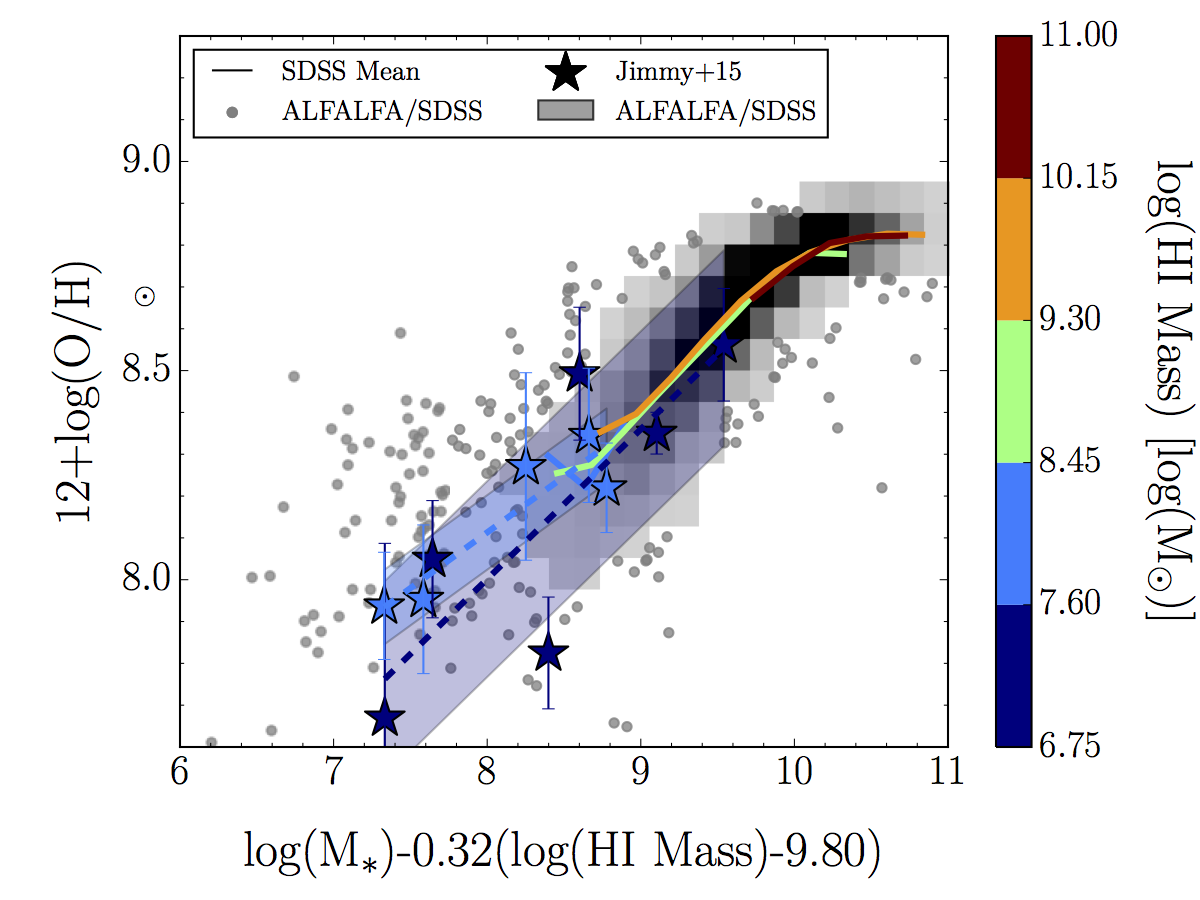
In creating our fundamental metallicity relations, we found that a value of beta = 0.32
produced the lowest scatter in the fundamental metallicity relation when observed as a
function of HI-gas mass. We find that this scatter is lower than in the star formation rate
relationship. We also find that this relation is consistent across the entire stellar-mass/HI-gas mass
range studied. Therefore we conclude that HI-gas mass is the more physically motivated parameter
to be used when studying the fundamental metallicity relation.
Code
All of the code that I have written over the years can be found in
my public Github profile.
Specific projects which may be of interest are:
Jimmy & the BCGs:
The code that I used to reduced the data and produce the plots for my first paper found in the
repository, coincidentally also the name of my future jazz fusion band. This code is useful
if you want to measure lambda_R, the angular momentum parameter used in Jimmy et al. 2013 or
if you want to see someone who's never coded in IDL learn it while they're coding.
AntiVIRUS: The python code that I wrote
once while on the mountain at McDonald Observatory in order to
try and reduce VIRUS-P data. It relies on p3d for the heavy lifting, but
it's nice because you can feed it a night's worth of data and get fully reduced
data automatically. At least that's the idea, it's still unfinished because I
have yet to get good data to test it with.
TSWIFT: The python code that I wrote to reduce the data and produce
the plots for my 2nd paper. This is useful to look at if you want to deconvolve severly
blended gaussian emission lines in your data due to poor instrumental resolution.

My departmental contact information.
Contact me via email.







